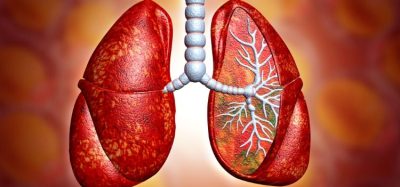Cellular Imaging & Analysis Business Unit
Posted: 30 July 2009 | Dr Mark Collins, Director of Marketing for Cellular Imaging and Analysis, Thermo Fisher Scientific, Pittsburgh | No comments yet
Mark Collins from Thermo Fisher Scientific, who provide analytical instruments, laboratory equipment, software, services, consumables and reagents, talks to us about current developments and future changes.
Mark Collins from Thermo Fisher Scientific, who provide analytical instruments, laboratory equipment, software, services, consumables and reagents, talks to us about current developments and future changes.
Mark Collins from Thermo Fisher Scientific, who provide analytical instruments, laboratory equipment, software, services, consumables and reagents, talks to us about current developments and future changes.
1. How do you feel the continued development of Thermo Fisher as a company is enabling you to address the needs of the Pharmaceutical Industry?
From the cellular imaging and analysis (CIA) perspective, being a part of the larger Thermo Fisher Scientific organisation has allowed us to “think big” about the entire workflow of high content and tap into the company-wide resources we have to bring pharmaceutical companies all that they need to be as productive as possible. As Cellomics Inc, when we invented high content 10 years ago, we always considered it as much more than just an instrument and software; now being a part of Thermo Fisher Scientific we have access to a depth and breadth of technology that enables our CIA organisation to offer solutions for such varied aspects of the high content workflow as novel plastics and specialised media to improve cell culture, through RNAi and reagents to in depth data visualisation software. Pharma customers benefit as Thermo Fisher Scientific itself continues to grow and focuses more and more on solutions that combine reagents, instrumentation and software to solve key needs. This philosophy benefits the CIA product line and hence our customers.
2. What do you believe gives your company an edge over its competitors in terms of serving the current and potential needs of your clients?
From the CIA perspective, we believe our edge is a combination of the breadth and depth of our offering, our absolute focus on all things high content and our experience. Ten years ago, Cellomics as it was then, brought the first commercial high content system to market. Since then we’ve learned, in collaboration with our Pharma customers (and others), what it takes to serve the needs of the high content researcher. In those 10 years we’ve understood that customers, above all, want to get value from their investment in high content. We believe we have provided that value in the form of products, support and training which results in our customers being the most productive in the industry. We measure that (proven) productivity in terms of peer reviewed papers published and in short our customers are five times more productive than our competitors’ customers. The community of high content users we’ve built over the last 10 years is also a great resource for new product ideas as well as honest feedback on our technology and we strive to maintain a long term mutually beneficial relationship with our customers, rather than a simple sales one. We like to think that a customer is not buying an instrument they are working with a partner who will make them successful in understanding cell function, today and for years to come.
3. Which areas of research do you think are currently benefiting most from application of HCS techniques?
As I’ve mentioned, 2009 is the ten-year anniversary of high content. Our first placements went to a couple of key places in Pharma, namely secondary screening/hit-to-lead and into the neuroscience field. The early benefits of high content, such as the ability to measure multiple parameters, to measure cellular events (such as morphology) that could not be measured by traditional techniques as well as automate manual methods (who remembers tracing neurons manually and counting micronuclei by eye), resonated with the Pharma industry keen to select better compounds, understand diseases better as well as model toxicity better. Today, pretty much all the Pharma research workflow from Target Identification and Validation (TI/TV) to pre-clinical is benefiting from high content. What areas are benefiting most out of these? We would probably say toxicity assessment, there is fantastic literature published on the benefits of high content for in vitro toxicology (IVT); and secondly TI/TV – coupling high content with RNAi is certainly a paradigm shift in being able to understand diseases. Improvements in TI/TV and IVT, both these areas are critical to Pharma being able to mitigate compound attrition rate due to lack of efficacy and/or toxicity risk of lead candidates.
4. Are there any new developments to your product lines on the horizon for you and which areas of research do you think will benefit most from these developments?
Obviously I cannot comment on specifics of our product roadmap, but we do pride ourselves on our continuous process of product development and innovation based on feedback from our customers. It’s easy to add another feature, but we really do take the time to validate each development for its value to the high content researcher and we never sell futures. From a trend perspective we continue to develop our platforms to provide ease of use and class-leading flexibility, which customers tell us allows them to utilise high content and deliver its benefits to more and more areas of research.
5. In the field of Cellular Imaging & Analysis, what do you think are the most important issues which need to be addressed, in order to enable the industry to fully utilise the potential these technologies can offer?
Without a doubt – analysing the data, coupled with bringing more people to the high content ‘table’.
Many high content platforms are like the ‘mainframes’ of the computer world in the 1960’s and ‘70’s, expensive, difficult to use and require significant training. We think that a ‘PC’ for high content would spawn a greater uptake of high content technology and more researchers being able to benefit from its capabilities.
In terms of the data – High content generates vast quantities of data, just like the genomics revolution when generating data was not the bottleneck, high content is in the same position, namely – what does all this data mean, what does it tell me about my compound or gene, or what the cell is doing. This issue, in our opinion is the single most key criterion for success and for continued adoption of high content, if it can only deliver data (or at worse, just pretty pictures) rather than knowledge of cellular function, then it won’t become as ingrained as it could be and researchers will be mostly blind to its insights.
6. What are your main goals moving forward through 2009-2010?
We will continue to bring innovative, well thought out products to our customers that they’ve asked for to make them as productive as possible. We’ll also ensure we look at the entire high content workflow, tapping into the breadth of expertise and products we have in our company to ensure we serve those customers from cell to decision.
7. Where do you envisage the major growth areas for HCS techniques occurring over next three-five years?
As always we’ll be guided by what all our customers consider to be key, but there’s no doubt that there is a big trend towards live cell, kinetic imaging to both better design fixed endpoint assays but also to allow for single cell pharmacology experiments. Creating high content profiles of compounds across multi-parameter space and time offers the possibility to gain deeper understanding of their function in cells. In addition to live cell, there is some interest in being able to analyse cells in a 3D matrix, especially stem cells. These more relevant physical models present a challenge for both imaging and analysis, but one that we believe is tractable, however both live cell kinetic and 3D will place huge demands on informatics infrastructures as well as impact throughput. We think though that these can be solved and that our experience in both live cell and informatics will be key in developing solutions for customers. We also consider that high content will branch into tissues and whole organisms – we’ve already seen some evidence for this and incidentally responded with products for Zebrafish and C.elegans analysis for example. We might argue that probably the greatest growth area for high content, will be high content itself, i.e. we see a growth in adoption of high content in more and more places within Pharma. We believe our proven productivity based on ease of use, flexibility, experience and cellular bioinformatics tools will offer Pharma customers an opportunity to benefit widely from high content. In short high content for everyone!







